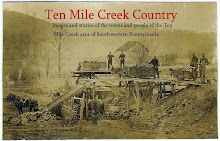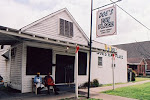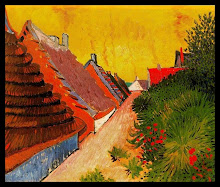
from the days when craftsmen made functional things of great beauty. These were made in the middle and late 1800's here in western Pennsylvania, were shipped down the Monongahela river on flatboats and steamboats and distributed around the country. Local historians mention that stoneware often went downriver as far as New Orleans in the 1850s and 1860s. Factories in New Geneva and Greensboro became the most prolific producers of salt-glazed wares in western Pennsylvania. The names of Atchison, Boughner, Dilliner, and Hamilton & Jones and Reppert became associated with large-scale stoneware manufacture in the 1800's. Smaller shops were also built in the towns of Rices Landing, Fredericktown, and West Brownsville.


 Even everyday items like a flower pot or chicken waterer were wonderfully executed
Even everyday items like a flower pot or chicken waterer were wonderfully executed
Many of the things needed in early western Pennsylvania, domestic wares in particular, could be fashioned from stoneware clay. These included water pitchers, churns, crocks, and canning jars, which were sold by the millions prior to the arrival of cheap glass. Any early order form would have also listed milk pans, spigot jars, various pots, chambers, bottles, and steins. Some potters made agricultural and industrial objects, such as poultry fountains, liquor jugs, and ware that could safely store acids and strong chemicals. On rare occasions, banks, doll heads, grave markers, twine holders, and whimsical novelties were created. Nineteenth-century consumers, especially homemakers, found these handsome vessels appealing because of their distinctive freehand cobalt blue flowers, vines, animals, birds, people, and abstract patterns.
All the potteries in western Pennsylvania produced large, masculine pieces, whose bold rims and strong shoulders were a reflection of the men who made them. Occasional flaws never detracted from their honesty.
In the 1870s, as the region's stoneware industry peaked, it turned to stenciled decoration both to cut costs and to give its image a makeover. Countless patterns were applied to vessels at this time, at first incorporating the pottery's name and later displaying the names and addresses of new customers anxious to self-promote. The stenciled crock, often viewed as synonymous with southwestern Pennsylvania stoneware, lacked the spontaneity of brush-decorated ware but was a superior article economically. Ordinary day laborers could learn to use a stencil in a day or two. This technique foreshadowed the decline and demise of the master decorator, whose handiwork is rarely seen after 1880. The more interesting stencils showcased eagles, flowers, fruit, shields, animals, abstract patterns, and -- though rarely -- people in action. Well-designed stencils produced patterns that fascinate in their great variety.
This was taken from an article called Western Pennsylvania's Stoneware Potters by Phil Schaltenbrand, written for the Westmoreland Museum of American Art


 Even everyday items like a flower pot or chicken waterer were wonderfully executed
Even everyday items like a flower pot or chicken waterer were wonderfully executedAll the potteries in western Pennsylvania produced large, masculine pieces, whose bold rims and strong shoulders were a reflection of the men who made them. Occasional flaws never detracted from their honesty.
In the 1870s, as the region's stoneware industry peaked, it turned to stenciled decoration both to cut costs and to give its image a makeover. Countless patterns were applied to vessels at this time, at first incorporating the pottery's name and later displaying the names and addresses of new customers anxious to self-promote. The stenciled crock, often viewed as synonymous with southwestern Pennsylvania stoneware, lacked the spontaneity of brush-decorated ware but was a superior article economically. Ordinary day laborers could learn to use a stencil in a day or two. This technique foreshadowed the decline and demise of the master decorator, whose handiwork is rarely seen after 1880. The more interesting stencils showcased eagles, flowers, fruit, shields, animals, abstract patterns, and -- though rarely -- people in action. Well-designed stencils produced patterns that fascinate in their great variety.
This was taken from an article called Western Pennsylvania's Stoneware Potters by Phil Schaltenbrand, written for the Westmoreland Museum of American Art






































1 comment:
They are so unique. I like old items. They look valueable.
Post a Comment